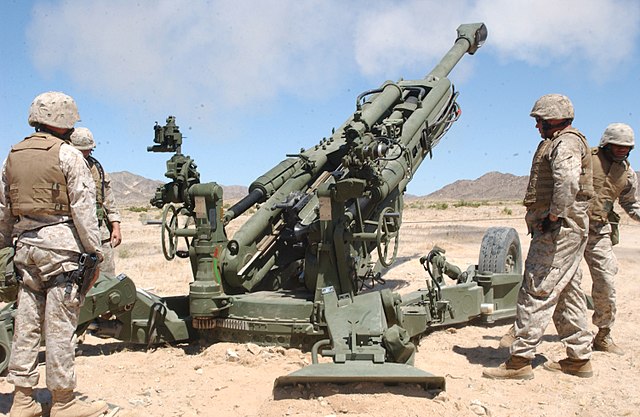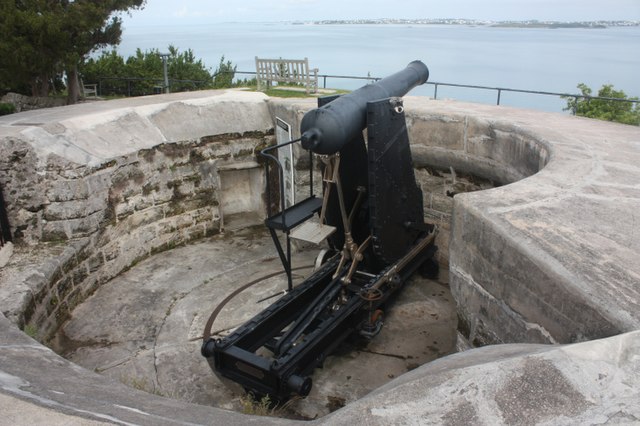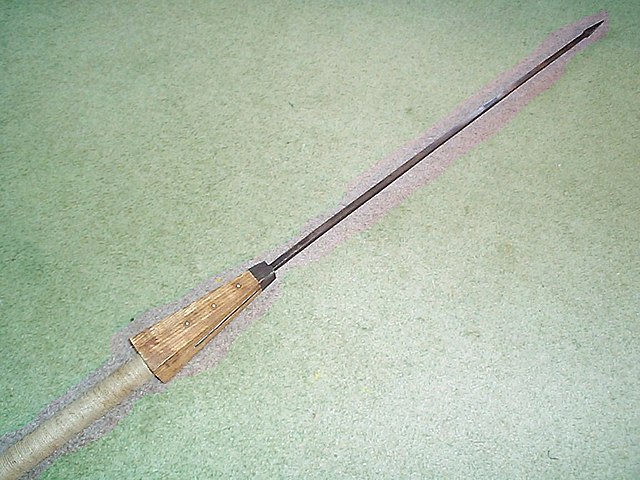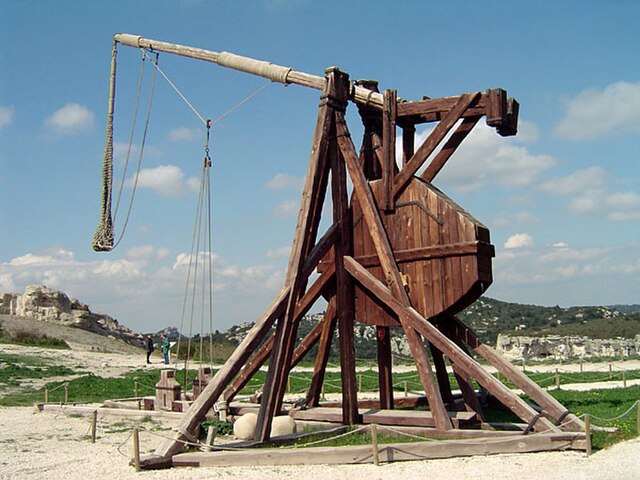Artillery are ranged weapons that launch munitions far beyond the range and power of infantry firearms. Early artillery development focused on the ability to breach defensive walls and fortifications during sieges, and led to heavy, fairly immobile siege engines. As technology improved, lighter, more mobile field artillery cannons developed for battlefield use. This development continues today; modern self-propelled artillery vehicles are highly mobile weapons of great versatility generally providing the largest share of an army's total firepower.
US Artillerymen fire-off an artillery round with the newly fielded M777 Lightweight 155-millimeter Howitzer
French soldiers in the Franco-Prussian War 1870–71
British 64 Pounder Rifled Muzzle-Loaded (RML) Gun on a Moncrieff disappearing mount, at Scaur Hill Fort, Bermuda. This is a part of a fixed battery, meant to protect against over-land attack and to serve as coastal artillery.
7-person gun crew firing a US M777 Light Towed Howitzer, War in Afghanistan, 2009
A ranged weapon is any weapon that can engage targets beyond hand-to-hand distance, i.e. at distances greater than the physical reach of the user holding the weapon itself. The act of using such a weapon is also known as shooting. It is sometimes also called projectile weapon or missile weapon because it typically works by launching solid projectiles ("missiles"), though technically a fluid-projector and a directed-energy weapon are also ranged weapons. In contrast, a weapon intended to be used in hand-to-hand combat is called a melee weapon.
A period illustration of the Battle of Crécy. English longbowmen figure prominently in the foreground at right where they drive away the French crossbowmen.
Reconstruction of a post-Marian pilum
Trebuchet at Château des Baux, France
155 mm M198 howitzer








